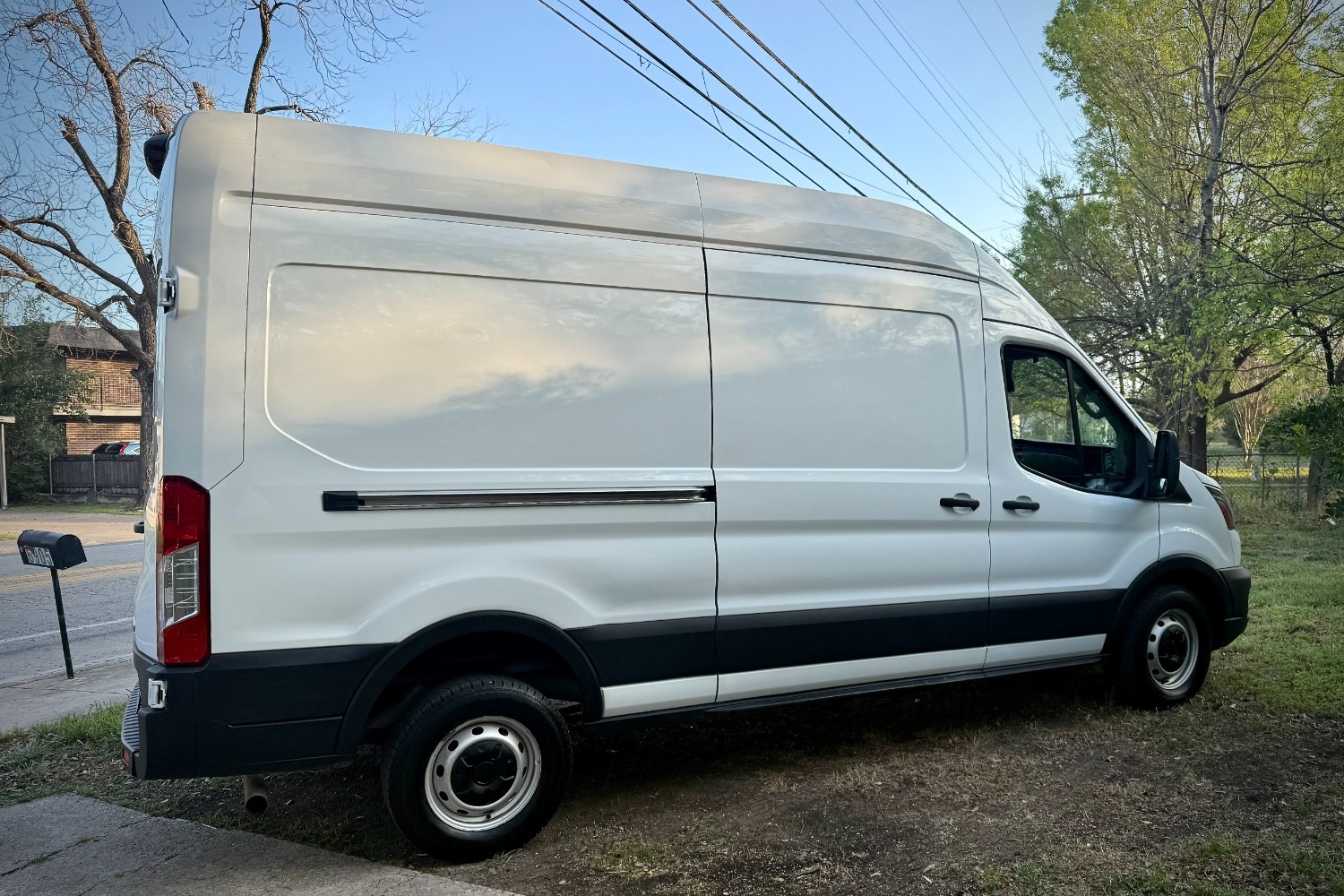I’ve spent decades shaving weight — grams off a bike build, scrutinizing pack weight before a climb. Weight kills performance. Every. Single. Time.
But I didn’t truly understand how dramatically weight affects a vehicle until I drove my empty cargo van home from the dealer.
The Lightbulb Moment
I’d previously owned vans with heavy suspension modifications. Upgraded shocks, struts, springs, the works. Did they drive better than stock? Absolutely.
Then I picked up my cargo van. Stock suspension. Bad tires. Zero modifications. And it drove 1,000x better than my heavily modded rigs.
Better acceleration. Better turning. Better over bumps. Better braking. All of it. Just right off the dealer lot.
The Real Problem Was Weight
That drive home was a punch to the throat. The costly suspension upgrades had definitely improved things, but they were fighting a losing battle against the real problem: weight.
Every cabinet, every “essential” system, every built-in feature I thought I needed had compounded into thousands of pounds that murdered the van’s handling, fuel economy, and component longevity. The suspension was working overtime just to compensate for all the things that justified a $100,000+ van.
The physics are brutal and inescapable. More weight means harder braking, faster brake wear. More stress on every bearing, bushing, and joint. Worse fuel mileage, sluggish acceleration, and compromised handling that makes highway driving exhausting and mountain passes feel sketchy.
My new build would be different.
The Vandoit Education
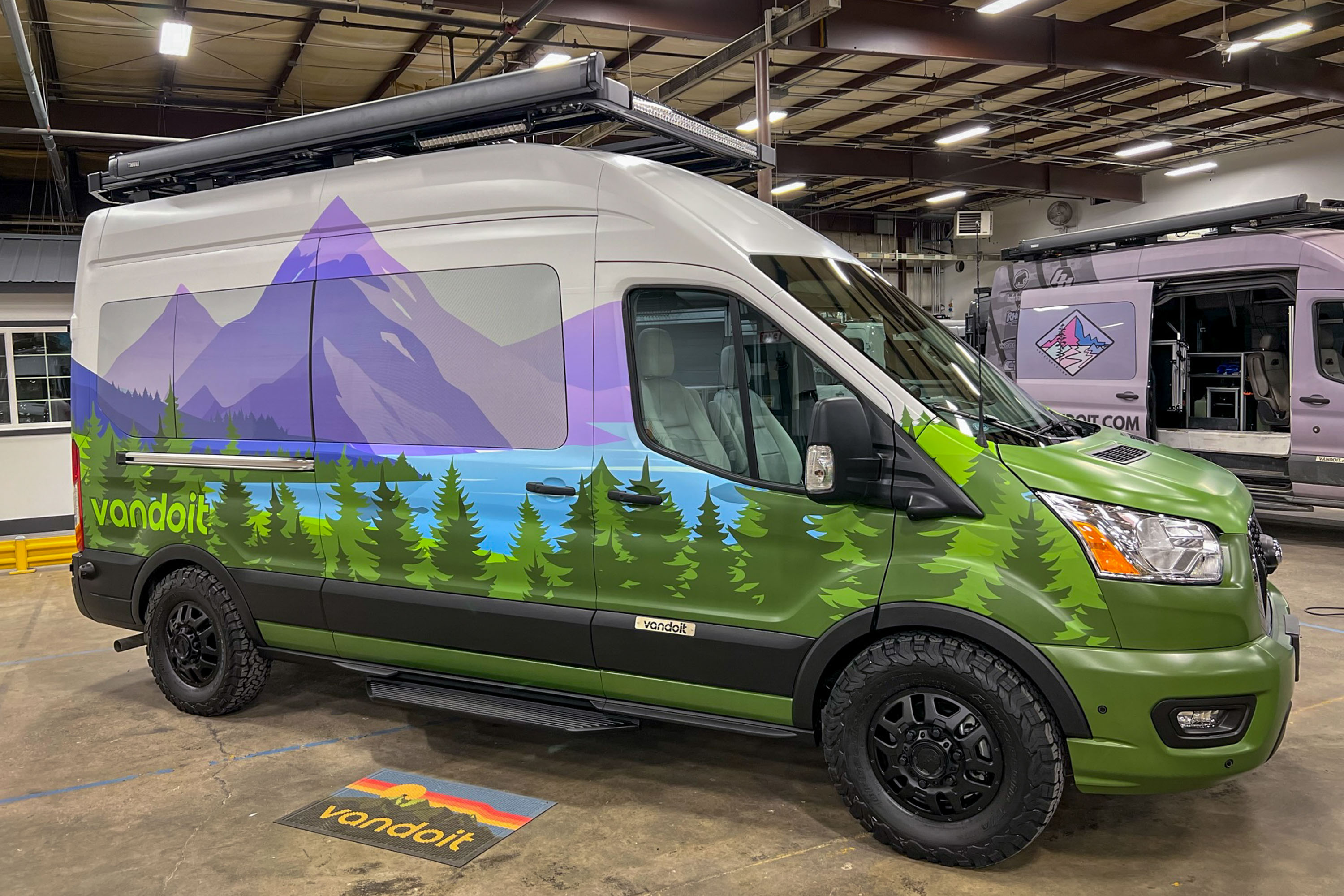

My time as a Vandoit ambassador taught me the other half of the equation: modularity. The cabinets and rear cabin seats could swap in and out, letting me reconfigure the van for different uses. That’s modularity — the ability to change your setup based on what the trip demands.
Materials Matter
I also learned what materials to avoid. Nothing that absorbs moisture — that’s mold and a pain in the ass to clean. Nothing that absorbs odors.
I’ve been in $200K vans that permanently smell like bacon because someone cooked in it once. I cook inside when it’s frigid or raining out. I don’t want my van to smell like every meal I cooked or well-used climbing shoes.
Same goes for materials that are hard to clean or require babying. No leather seats that need conditioning. Or fabric walls that trap dirt and moisture. No flooring that scratches easily or has crevices where dirt hides. The interior has to be truly adventure-, dirt bag-, and dog-proof.
I want surfaces I can wipe down in minutes and sweep out quickly. This is a tool, not a luxury RV I’m afraid to use.
How the Industry Does It
That’s how a vast majority of the industry builds campervans. Load them with every feature imaginable. It makes them more attractive on the showroom floor, easier to sell, more impressive in photos.
Many commercial builders try to be everything to everyone — the ultimate mobile apartment that can handle any scenario. And I get it. When you’re selling a vehicle that costs more than some houses, buyers expect the works.
The modular concept was brilliant. But I discovered it didn’t match how I actually used my van.
The 10% Problem
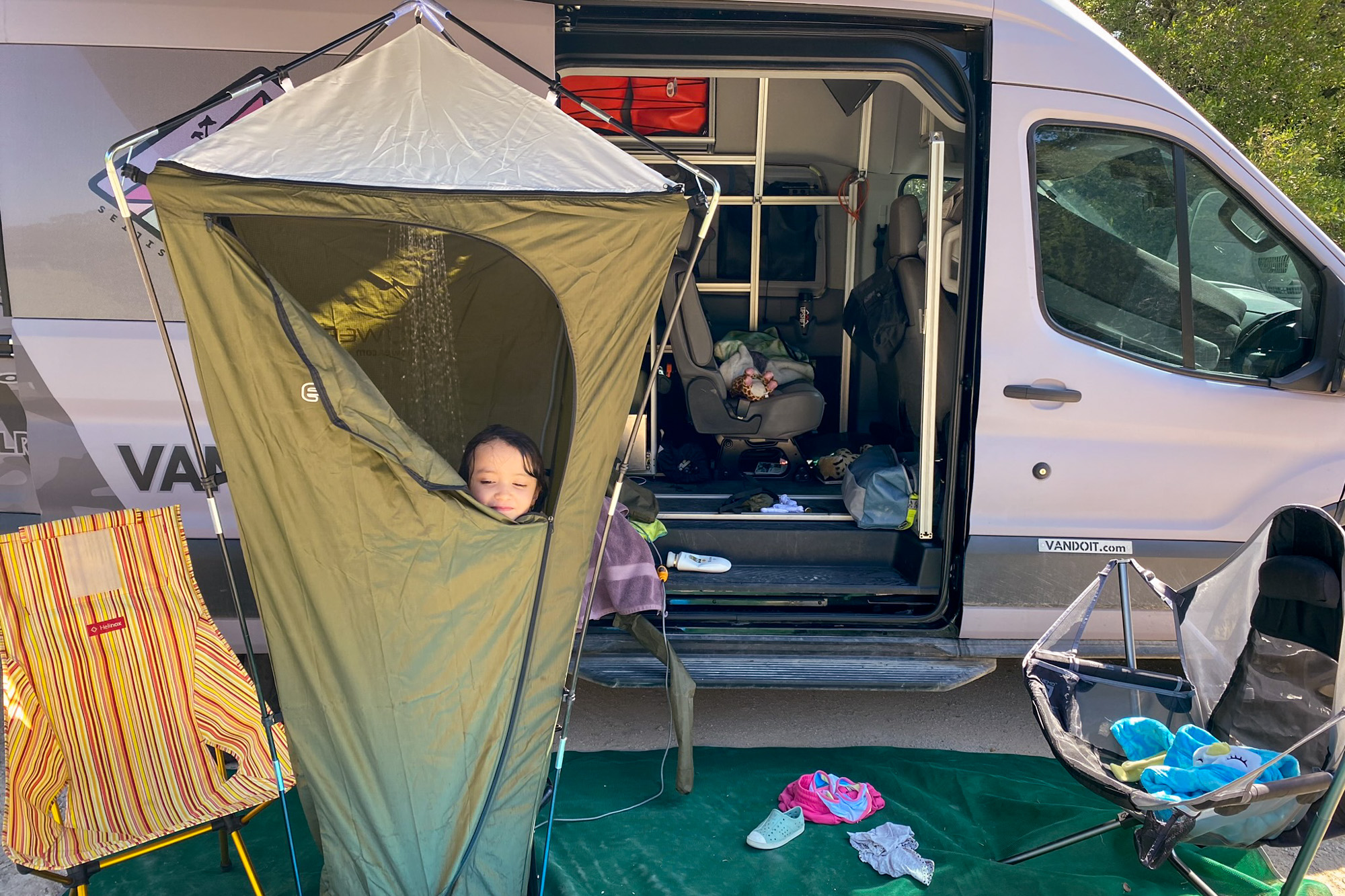

First, the main cabinets — while solidly built for durability — were too heavy for me to move solo. More importantly, I was hauling around features I’d use maybe 10% of the time.
That built-in hot shower? Amazing when I needed it. But I needed it on maybe one out of 10 trips. The hydraulic bed? Incredible engineering, but I set it once and never moved it again.
All those comfort features I thought were essential added hundreds of pounds to every mile I drove, whether I was using them or not.
Portable, standalone solutions exist for almost everything. A portable camping shower weighs a few pounds and lives in a closet at home until I need it. A compact camp stove does 90% of what a built-in kitchen does at a fraction of the weight.
I was carrying a full-time solution to part-time problems.
There’s no point in modularity if reconfiguring your rig requires a friend with a strong back. And there’s no point in features if they cost you performance every day for the occasional day you use them.
The Build Philosophy
Here’s the plan: build the lightest, most modular campervan possible, where every component I can move myself serves multiple purposes. This van gets only what I need 90% of the time. Everything else stays home until the trip requires it.
And this one hurts: I don’t need a $5,000 six-speaker sound system with a 12-inch woofer. Ouch!
Light Is Right
Lightweight isn’t about sacrifice; it’s about efficiency. I’m not going ultralight-backpacker extreme, cutting my toothbrush in half. I’m questioning every pound.
Does this cabinet need heavy-duty materials or will lighter ones do the job? Can this system mount to the wall instead of sitting on the floor? Do I really need this, or is it just nice to have?
Modularity Means Simple
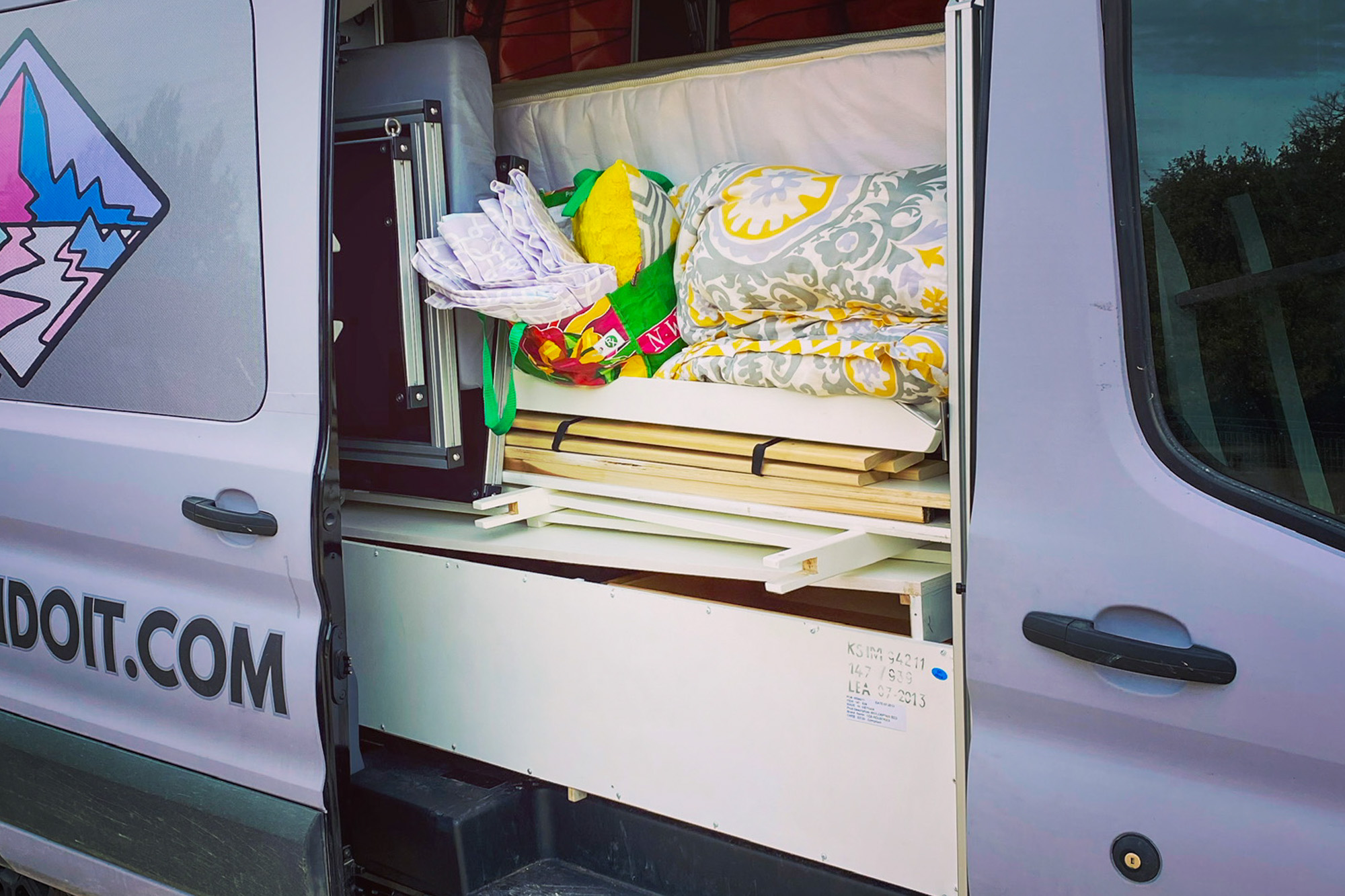

Modularity isn’t about complexity — it’s about simplicity. The floor plan needs to be dead simple. Maximum open space. Minimal built-ins. Components that can slide, stack, and reconfigure without tools.
Every piece should make the van more useful, not less.
The goal is a platform, not an apartment on wheels. I want room for gear — bikes, skis, climbing equipment, camera gear, whatever the mission requires. The van should adapt to the adventure, not force the adventure to adapt to it.
The Floorplan: Keep It Simple
For me, the best layout is the most common: a standard platform bed in the back. I’ve had the fancy stuff. Hydraulic beds that raise and lower. Murphy-style beds that fold up against the wall, creating lounge space for hanging out at camp.
They’re impressive and offer real versatility for people who use their vans as mobile living rooms. But they also add weight, mechanical complexity, and potential failure points. I don’t want the complications.
Why a Fixed Bed Works
I set my old hydraulic bed to fit bikes underneath and only adjusted it when my daughter was small enough that the lower platform mattered. Now she’s tall enough to climb in the same way I do.
The reduced headspace while sleeping doesn’t bother me. I’m sleeping. My eyes are closed.
Front Seats Only
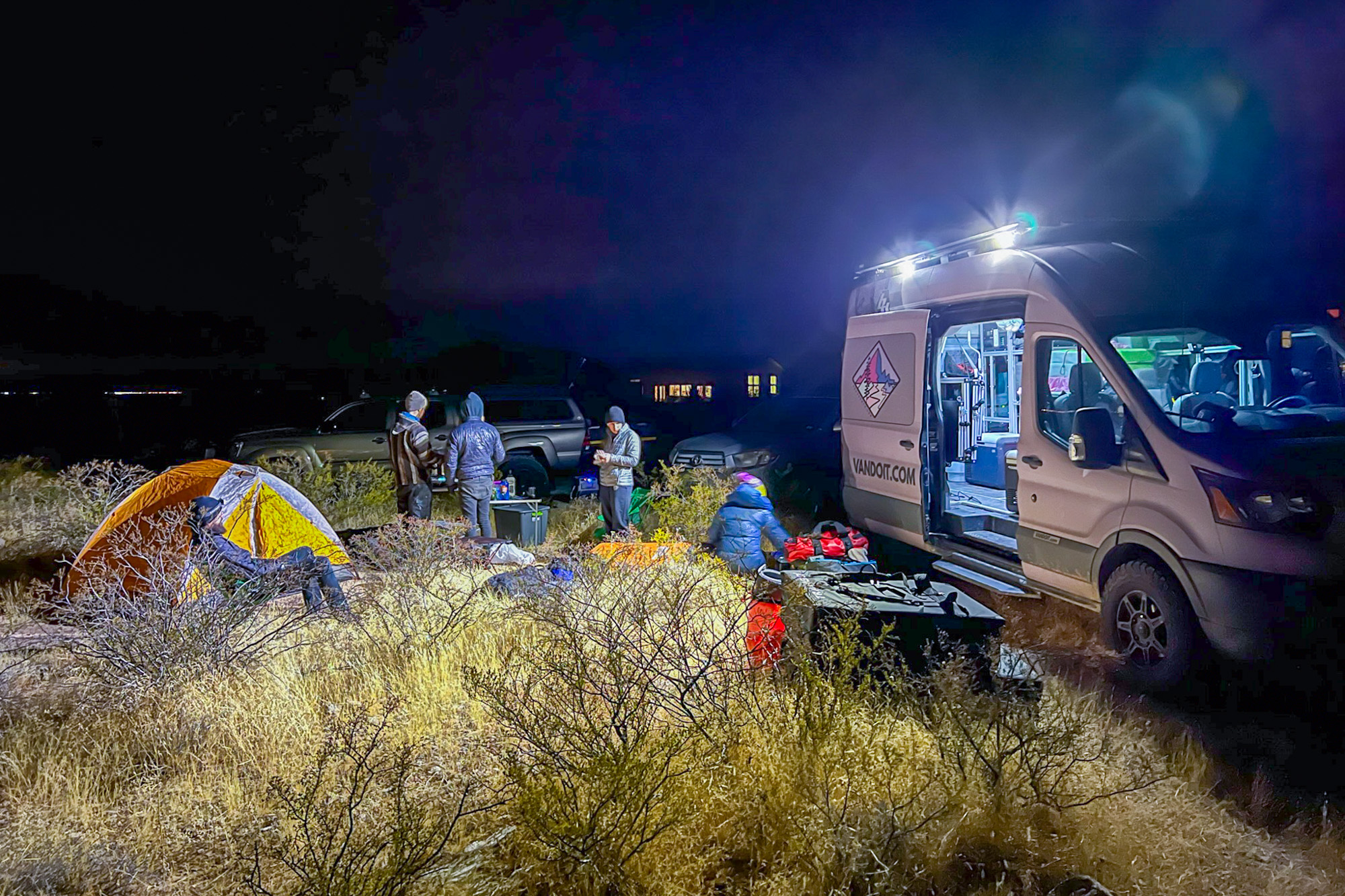

I’ve also had removable rear seats for a passenger-hauling setup. This time? Just the front seats.
I’m giving up something — the ability to split gas costs with passengers. But even when I brought extra people, they had to haul all their gear for camping and doing all the things. This added significant weight and often forced everyone to compromise on what they packed because of limited space.
If the trip involved bicycles, I could only take two bikes anyway to have any room left for other gear. And if bouldering was on the menu? Crash pads could take up most of the van if we were highballing.
The passenger capacity was somewhat theoretical. In practice, it rarely worked the way I hoped.
I’m offsetting the solo-driver gas cost in other ways. I chose the non-turbo Ford Transit motor — less power, but also less complexity and better fuel economy. And, this entire build will be dramatically lighter than my previous rigs, which means better mileage than I’ve ever gotten.
Where I Won’t Compromise: Battery Power
There’s one place I’m not skimping: battery capacity.
I know from experience that in remote places without plug-ins, I always used all the power I had. Every amp-hour. Cameras, laptops, lights, charging devices, running a fan or AC on hot nights, keeping the fridge cold for a week-long trip, it all added up.
I’ve been in situations where I was rationing power by day 3, and it was miserable.
Why Battery Weight Is Worth It
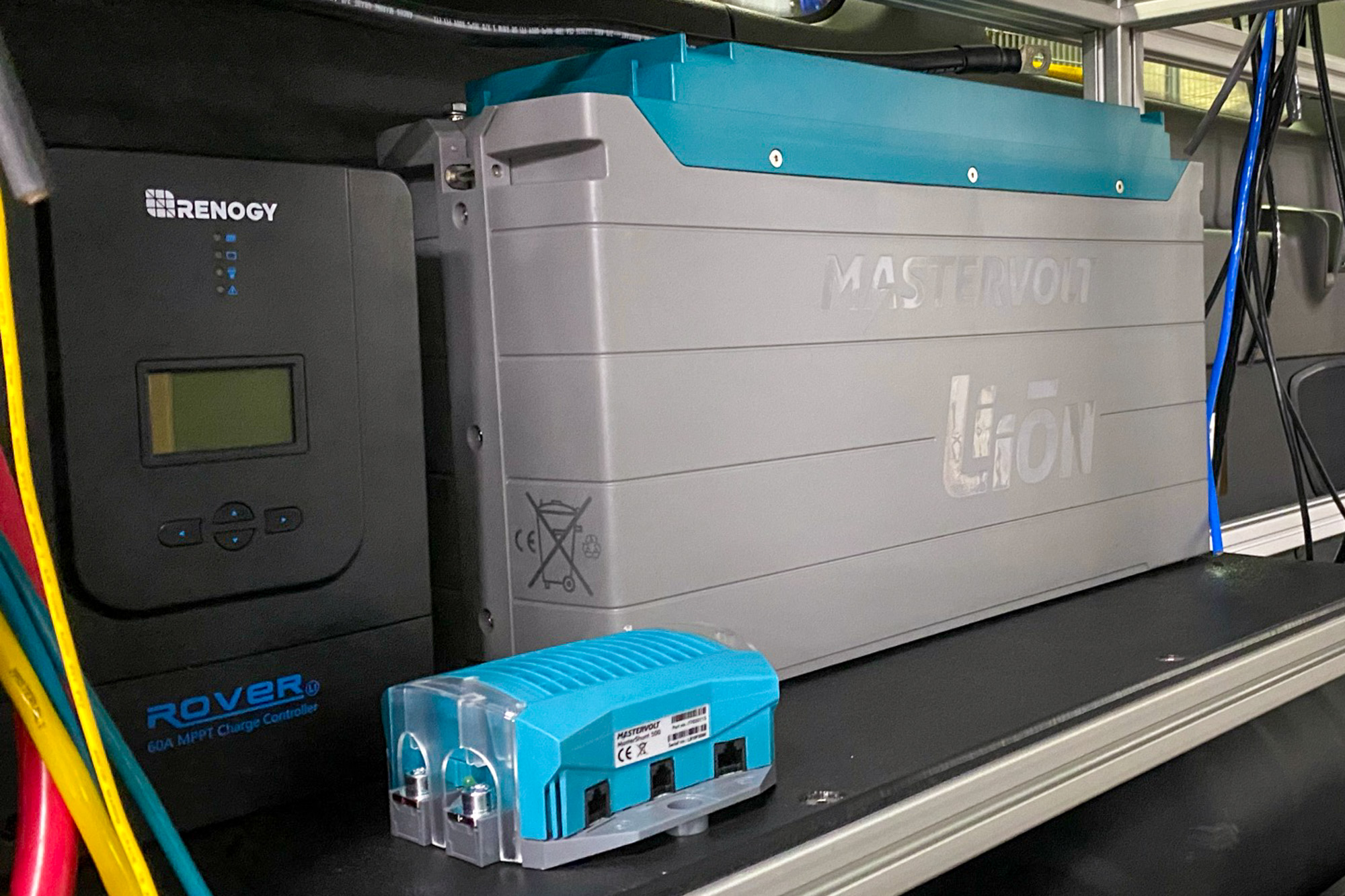

Yes, batteries are heavy. A serious lithium house battery system adds massive weight. But this is the 90% use case. This is what I need on nearly every trip.
Unlike the built-in shower or the fancy hydraulic bed, power is non-negotiable when you’re off-grid. I can’t just “bring it if I need it.”
So the electrical system gets a full build. Adequate solar to keep things topped off. Enough battery capacity to run everything I use without anxiety.
This is where the weight is worth it — because the alternative is being tethered to campgrounds or constantly worrying about whether I have enough juice.
What This Really Means
I’m approaching this build like any performance equipment decision. Every component gets interrogated: What does it weigh? Can I move it myself? Will I actually use this 90% of the time, or is this a “nice to have” that’s dead weight?
Cabinets will be lightweight materials, sized so one person can handle them. Systems will mount high or externally where possible. The floor plan will prioritize open, reconfigurable space over fixed furniture.
If something is not needed, it can be removed.
What Gets to Move
What I specifically want to be able to move, based on past experience: cabinets if I don’t need them on a particular trip — either for more headspace or to free up floorspace.
The kitchen galley in case I need that space for gear. I can cook outside most of the time and wash dishes out there too. If I’m on a bike trip with multiple bikes or a moto trip with all the protective gear, I don’t need the galley taking up valuable floor real estate.
What Gets Left Behind
That hot shower I loved in the Vandoit? I’ll bring a portable shower when I know I’m going somewhere I’ll actually use it.
The fancy cabinets with multiple drawers and fold-down tables? Scaled back to ones I can move myself.
The built-in everything? Stripped down to built-in essentials — and a serious electrical system that won’t leave me stranded without power.
The best modification is often the one you don’t make. Every pound I don’t add is a pound that isn’t wearing my brakes, killing my fuel economy, or making the van handle like a loaded dump truck.
This build is about getting back to what a van does best — getting you and your gear to the adventure, then getting out of the way.
Less weight. More versatility. Maximum capability.
That’s the plan.
Read the full article here




